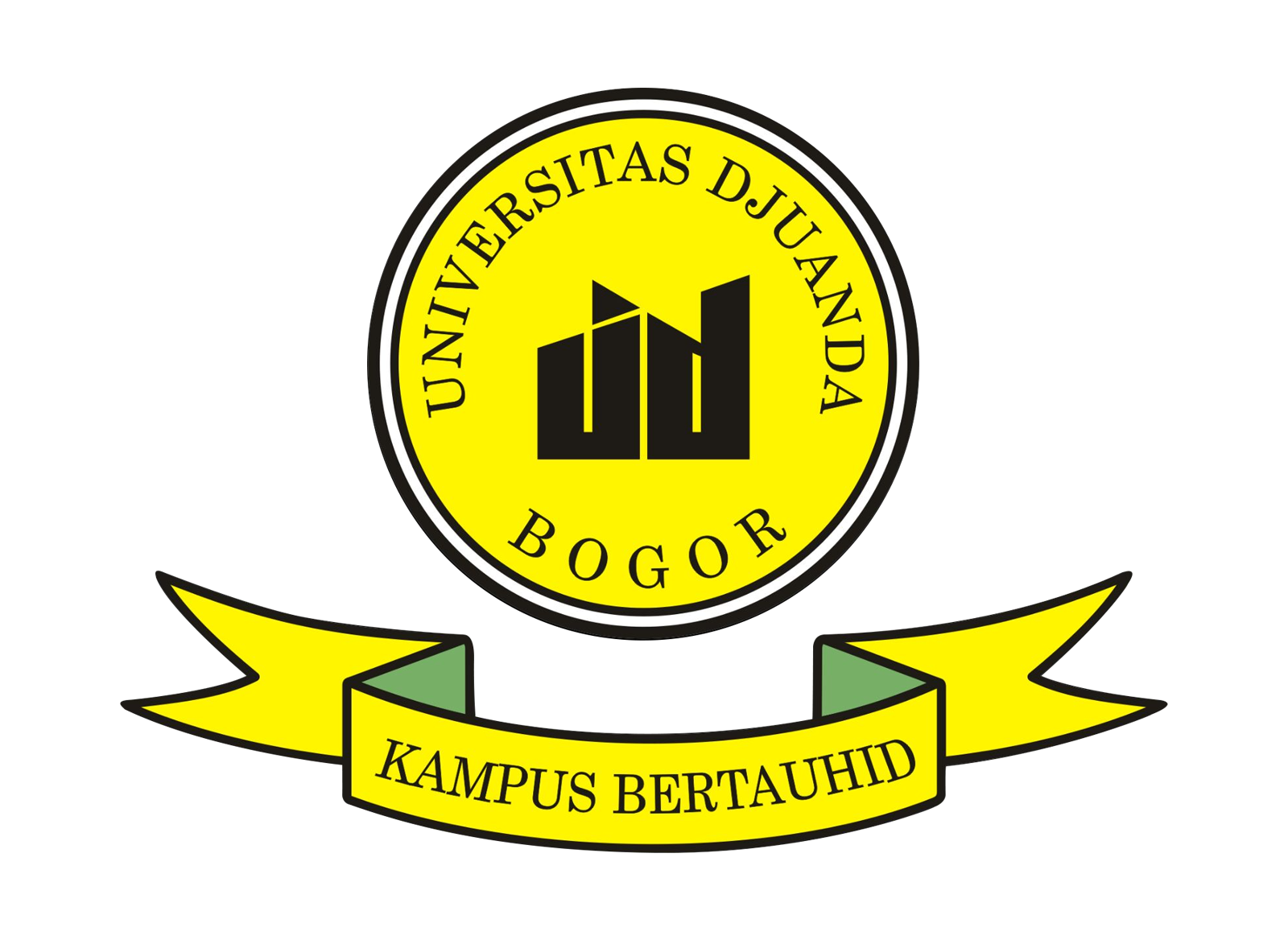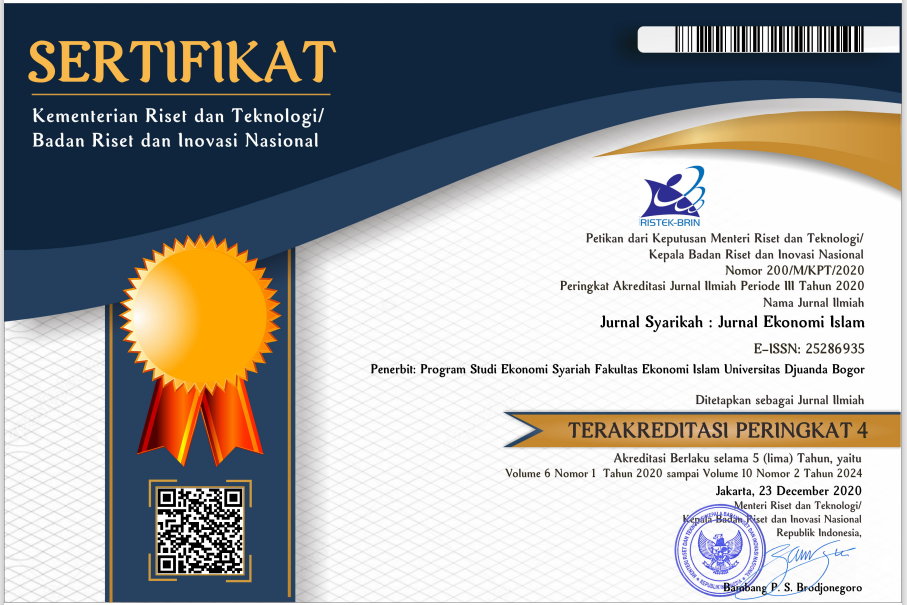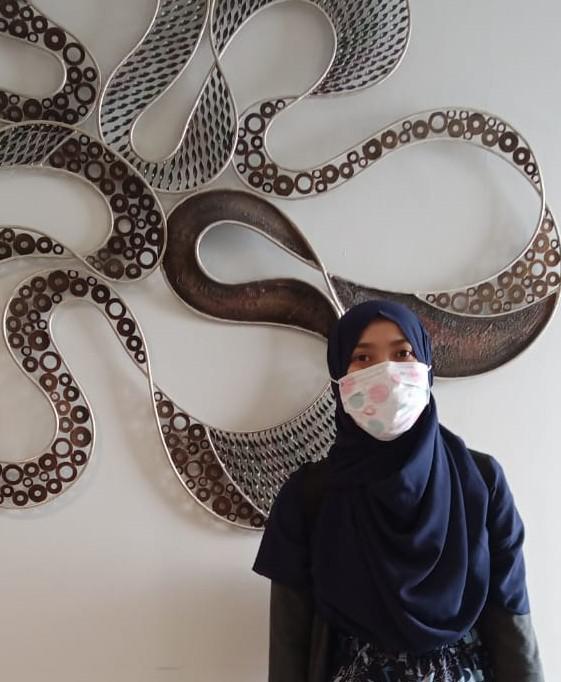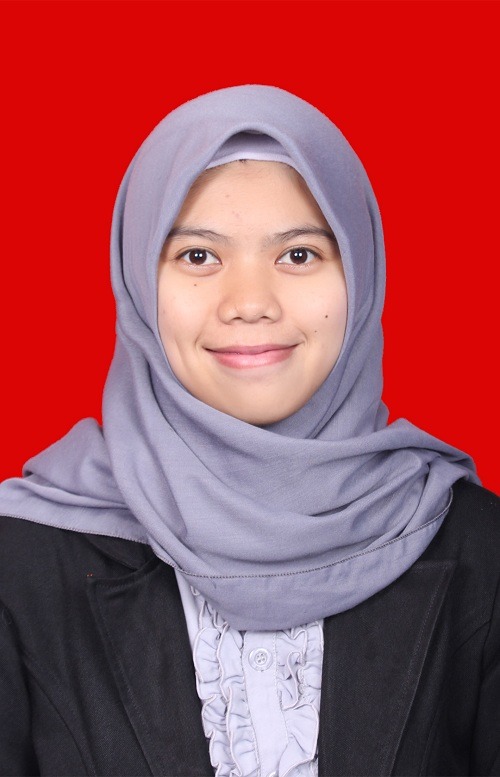PENGEMBANGAN LEMBAGA PENGELOLA DANA BERGULIR SYARIAH DALAM MENDUKUNG USAHA MIKRO KECIL DAN MENENGAH DI INDONESIA
DOI:
https://doi.org/10.30997/jsei.v4i2.1502Keywords:
LPDB, Small micro enterprises, Interpretative Structural Model (ISM)Abstract
This study attempts to identify the factors of needs, activities and objectives in the development of revolving fund management institution (LPDB) sharia in Indonesia, using the Interpretative Structural Model (ISM) approach. The results of this study provide some conclusions include: (1) Elements of the needs of the key in LPDB sharia development strategy in Indonesia to improve SMEs is the need for strong support on internal condition of the institution; (2) Elements of activities that are key to LPDB Shariah development are to identify the problem faced by the member in the field and give some solutions, and (3) Elements of problem that maybe faced in LPDB sharia development in Indonesia is the changes on technology in business lanscape and economic, overallReferences
Ascarya, Widyo G, Widodo C, Enny A, dan Ferry S, 2012. Strategi Meningkatkan Preferensi Perbankan Syariah Indonesia Dalam Menggunakan Pembiayaan Bagi- Hasil. Jakarta: Central Banking Education and Studies Department, Bank Indonesia.
Aslichan, Hubeis M, Sailah I. 2009. Kajian Penilaian Kesehatan dalam Rangka Mengevaluasi Kinerja Lembaga Keuangan Mikro Syariah Baitul Maal wat Tamwil, Jurnal Manajemen Pengembangan Industri Kecil Menengah Sekolah Pascasarjana IPB, 4(2), pp.195-205.
Banerjee, Abhijit V., Timothy Besley and Thimothy W. Guinnane (1994). Thy Neighbor’s Keeper: The Design of a Credit Cooperative with Theory and a Test. Quarterly Journal of Economics 109(2), 491-515.
Bank Indonesia,2015, Profil Bisnis Usaha Mikro, Kecil dan Menengah, Jakarta
Baskara Kajeng, 2013, Lembaga Keuangan Mikro di Indonesia, Jurnal bulletin Studi Ekonomi, Vol.18,No 2
Berita Negara Republik Indonesia,2017 Peraturan Kemek-kum No 08/Per/M.Kum/VII/2017
Bhattacharya, S., and Momaya, K. (2009). Interpretive Structural Modeling of Growth Enablers in Construction Companies. Singapore Management Review. ABI/INFORM Global: 73
Bolanos et.al. (2005). Using Interpretive Structural Modelling in Strategic Decision-Making Groups. Management Decision 43 (6): 877-895.
Devi, Abrista and Rusydiana, Aam Slamet (2016), “Islamic Group Lending Model (GLM) and Financial Inclusion”, International Journal of Islamic Business Ethics Vol. 1 No 1, pp. 80-94.
Fukuyama, Francis (2002). Social Capital and Development: The Coming Agenda. SAIS Review Vol. XXII No.1 (winter u/2013 spring 2002)
Gema PKK, (2003). Kemiskinan dan Keuangan Mikro. KPK
Gorvett, R. and Liu, N., 2007. Using interpretive structural modeling to identify and quantify interactive risks. Orlando – USA: ASTIN Colloquium.
Kanungo S dan V.V. Batnagar, 2002. Beyond Generic Models for Information System Quality : The Use of Interpretative Structural Modelling (ISM). Journal of System Research and Behavior Science. Vol. 19 (2), P 531:549.
Kemas, Danial,2015, Rencana Strategi Bisnis LPDB-KUMKM 2015-2019, Jakarta
Lee, D. M. (2007). Structured Decision Making with Interpretive Structural Modelling (ISM). Canada: Sorach Inc.
Lukman, Syukri., Niki Lukviarman, Harif Amali Rivai, Tafdil Husni, Syafrizal, dan Maruf (2008). Kajian Upaya Penguatan Peran Microbanking dan Pendekatan Pembiayaan Kelompok dalam Rangka Pengembangan UMK di Sumatra Barat. Penelitian atas kerjasama antara Bank Indonesia dan Center for Banking Research Universitas Andalas.
LPDB-KUKM. 2018. Ringkasan Eksekutif Rencana Bisinis dan Anggaran LPDB-KUKM 2018
Marimin. 2004. Pengambilan Keputusan Kreteria Majemuk. Teknik dan Aplikasi. Gramedia Widiasarana Indonesia. Jakarta.
Muhar, 2009. “Kebijakan dan Strategi Pengembangan Lembaga Keuangan Mikro”. Jurnal Inovasi Vol. 6 No. 4 Desember 2009.
Otoritas Jasa Keuangan, 2015. Siaran Pers OJK dan Perbankan Syariah Gelar Expo iB Vaganza 2015. Jakarta.
Othman, A, Fatimah K, & Rosita H, 2013. A Comparative Analysis of the Co-operative, Islamic and Conventional Banks in Malaysia. American Journal of Economics 3 (SC): page 184-190.
Patten, Richard H, Jay K. Rosengar. (1991). The Development of Rural Banking in Indonesia. San Fransisco: ICS Press.
Radyati, Maria R. Nindita (2012). Keuangan Inklusif Perbankan. Published on Universitas Trisakti. MMCSR & MMCE. http://www.mmcrusakti.org
Riwajanti, Nur Indah, 2014, Exploring the role of Islamic Microfinance Institution in Poverty Alleviation Thourgh Microenterprises Development, A Case Study of Islamic Financial Cooperative (BMT)in IndonesiaKyoto bulletin of Islamic Area Studies, 7 Marc 2014, pp 49-66
Robinson, MS (2001). The Microfinance Revolution, Sustainable Finance for the Poor. World Bank Economic Review.
Rudjito (2003). Sinergi Kebijakan dalam Mendorong Pertumbuhan Usaha Mikro Kecil dan Menengah. Paper dipresentasikan pada Lokakarya Mendorong Pertumbuhan Usaha Kecil dan Menengah yang Sehat dan Berdaya Saing. Asosiasi Pengusaha Indonesia (APINDO). 12 Desember 2003, Aston Hotel: Jakarta.
Rusydiana, Aam S. (2018a). “Developing Islamic financial technology in Indonesia”. Hasanuddin Economics and Business Review, Vol. 2, No 2, pp.143-152.
Rusydiana, Aam S. (2018b). “Aplikasi Interpretive structural modeling untuk strategi pengembangan wakaf tunai di Indonesia”, Jurnal Ekonomi dan Bisnis Islam, Vol.4, no.1, pp.1-17.
Rusydiana, Aam S, and Abrista Devi, (2018). “Mengembangkan koperasi syariah di Indonesia: Pendekatan Interpretative Structural Modelling (ISM)”. Economica: Jurnal Ekonomi Islam, Vol. 9 No. 1, pp.1-23.
Rusydiana, Aam Slamet and Abrista Devi. (2013). “Challenges in Developing Baitul Maal wat Tamwiil (BMT) in Indonesia using Analytic Network Process (ANP)”. Business and Management Quarterly Review 4(2) 51-62
Rusydiana, Aam Slamet and Abrista Devi. (2013b). “Mengurai Masalah dan Solusi Pengembangan Lembaga Keuangan Mikro Syariah (LKMS) di Indonesia: Pendekatan Metode BOCR Analytic Network Process (ANP)”. Jurnal Ekonomi dan Bisnis Islami Vol.3 No.1 19-40.
Saipudin, Ahmad dkk, 2017, Strategy Pengembangan Keuangan Mikro Syariah Study kasus pada BMT Tawfin Jakarta
Saxena, J. P. 1992. Hierarchy and Classification of Program Plan Element Using Interpretative Structural Modelling. Systems Practice, Vol. 12 (6), P 651:670
Schurmann, Anna T dan Heid Bart Johnston (2009). The Group-Lending Model and Social Closure: Microcredit, Exclusion, and Health in Bangladesh. J Health Popul Nutr. 27(4): 518-527.
Siswanto. 2009, “Strategi Pengembangan Baitull Maal Wattamwil (BMT) Dalam Memberdayakan Usaha Kecil dan Menengah”. Tesis pada Program Pascasarjana Universitas Diponegoro.
Smolo, Edib. 2007, “Microcrediting in Islam: Islamic Micro-financial Institutions”. Paper dipresentasikan pada International Conference on Islamic Banking and Finance, IIUM Malaysia, April 2007.
Stiglitz, Joseph E (1990). Peer Monitoring and Credit Markets. World Bank Economic Review 4(3), 351-366.
Suharto, Saat. 2010, Outlook BMT 2011. Permodalan BMT Center: Jogjakarta.
Takkar, J., et.al. (2007). Development of a Balanced Scorecard, An Integrated Approach of Interpretive Sructural Modeling (ISM) and Analytic Network Process (ANP). International Journal of Productivity and Performance Management 56 (1): 25-59.
Downloads
Published
How to Cite
Issue
Section
License
Authors who publish with Jurnal Syarikah: Jurnal Ekonomi Islam agree to the following terms:
- Authors retain copyright and grant the journal right of first publication with the work simultaneously licensed under a Creative Commons Attribution 4.0 International License that allows others to share the work with an acknowledgement of the work's authorship and initial publication in Jurnal Syarikah: Jurnal Ekonomi Islam.
- Authors are able to enter into separate, additional contractual arrangements for the non-exclusive distribution of the journal's published version of the work (e.g., post it to an institutional repository or publish it in a book), with an acknowledgement of its initial publication in Jurnal Syarikah: Jurnal Ekonomi Islam.
- Authors are permitted and encouraged to post their work online (e.g., in institutional repositories or on their website) prior to and during the submission process, as it can lead to productive exchanges, as well as earlier and greater citation of published work
SURAT PERNYATAAN PEMINDAHAN HAK CIPTA[1]
Yang bertanda tangan di bawah ini adalah penulis naskah yang berjudul:
yang diajukan untuk dipublikasikan pada Jurnal Syarikah : Jurnal Ekonomi Islam ISSN 2442-4420 menyatakan bahwa:
Kami bersedia memindahkan hak publikasi, distribusi, reproduksi, dan menjual naskah kamiyang berjudul tersebut di atas sebagai bagian dari Jurnal Syarikah kepada Dewan Redaksi Jurnal Syarikah : Jurnal Ekonomi Islam ISSN 2442-4420
Demikian surat pernyataan ini saya buat dengan sadar, penuh rasa tanggung jawab, dan tanpa paksaan dari pihak mana pun!
No | Nama Penulis (lengkap dengan gelar akademik) | Nama dan Alamat Institusi, email | Tanda Tangan | Tanggal |
1 |
|
|
|
|
2 |
|
|
|
|
3 |
|
|
|
|
4 |
|
|
|
|
5 |
|
|
|
|
[1] Dikirim ke Dewan Redaksi Jurnal Syarikah, Program Studi Ekonomi Islam Fakultas Ekonomi Islam Universitas Djuanda Bogor, Gedung B Lantai IV Jl Tol Ciawi No. 1 Kotak Pos 35 Ciawi Bogor 16720, difaksimilikan ke 02518240985, dan hasil scanning-nya diemailkan ke Jurnal.Syarikah@unida.ac.id






